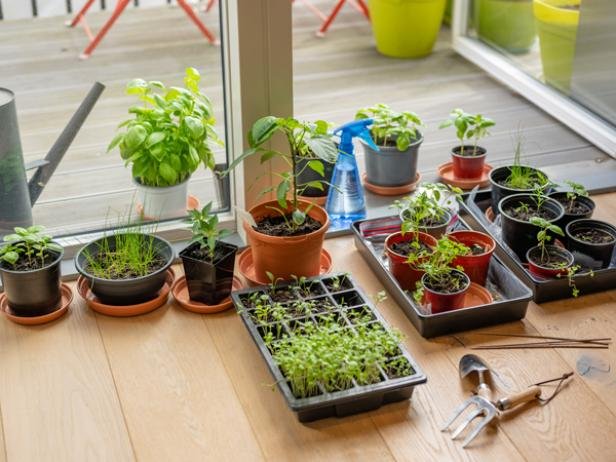Apartment DIY Gardening
No backyard? No problem! Here are some ideas to get you started gardening this year.
All it takes is a balcony, a window sill, or even a corner of the living room to cultivate a thriving oasis within the confines of an apartment. Including homegrown fruits, vegetables, and herbs.
For plants to thrive they need a few things that can be provided even within an apartment:
Soil
Room to grow
Sunlight
Water
To maximize space, vertical gardening, container gardening, and hydroponics are convenient methods. Hydroponic systems, which grow plants without soil, offer an efficient and creative alternative for apartment dwellers.
Here are some helpful tips:
Choose the Right Plants: Before diving into indoor container gardening, it's essential to select plants that are well-suited to indoor environments. Consider factors such as light levels, humidity, and space constraints when choosing your plants. Some popular options for indoor gardening include:
Herbs: Basil, mint, parsley, and chives thrive in indoor environments and can add fresh flavor to your meals. Instead of buying a large bunch and only needed a sprig, you can harvest what you need as needed - no waste!
Succulents: Low-maintenance succulents like aloe vera, jade plant, and echeveria are perfect for beginners and add a touch of greenery to any space.
Leafy Greens: Varieties such as lettuce, spinach, and kale can be grown indoors and provide a fresh supply of nutritious greens for your meals. You can harvest a few lettuce leaves and the allow the plant to keep on growing!
Select Suitable Containers: When it comes to indoor container gardening, the possibilities are endless. Choose containers that not only complement your home decor but also provide adequate drainage and space for your plants to thrive. Consider using:
Terracotta pots: Classic and versatile, terracotta pots allow for excellent drainage and airflow, ideal for plants that prefer drier soil.
Hanging baskets: Perfect for trailing plants like ivy and ferns, hanging baskets can add vertical interest to your indoor garden.
Self-watering containers: For busy individuals or those prone to forgetting to water their plants, self-watering containers offer a convenient solution by providing a reservoir for water storage.
Prepare Your Soil: Select a high-quality potting mix specifically formulated for indoor plants. Avoid using garden soil, as it can be too dense and may contain pests or diseases. Fill your containers with potting mix, leaving a few inches of space at the top to allow for watering.
Plant Your Garden: Once you've selected your plants and containers, it's time to get your hands dirty and start planting! Carefully remove your plants from their nursery pots, gently loosen the roots, and place them in your containers. Add more potting mix around the plants, pressing lightly to secure them in place. Water thoroughly after planting to help settle the soil. If you are feeling brave, start from seed!
Provide Proper Care: To ensure the health and vitality of your indoor garden, it's essential to provide proper care and maintenance. Here are some tips to keep your plants happy:
Watering: Pay attention to the water needs of your plants and water accordingly. Avoid overwatering, as it can lead to root rot and other issues.
Light: Place your indoor garden in a location that receives adequate sunlight, or supplement with grow lights if natural light is limited. Keep in mind that some plants should not be in direct light.
Pruning and Trimming: Regularly prune and trim your plants to promote healthy growth and prevent overcrowding.
Fertilizing: Feed your plants with a balanced fertilizer every few weeks during the growing season to provide essential nutrients.
Malcolm P Chapman/Getty
For more information, here is resource from Cornell University about growing a garden indoors.


